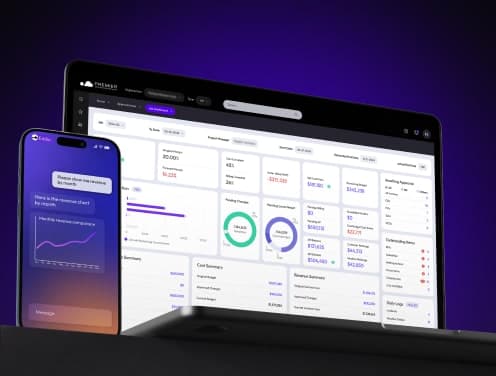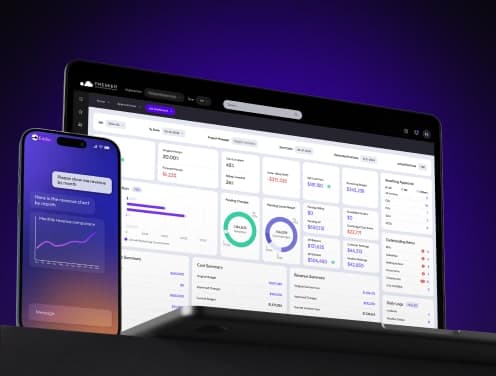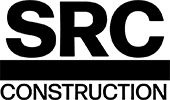
Construction Payment Management: Essential Steps for Error-Free Processing
Did you know that 82% of contractors regularly experience payment delays exceeding 30 days in 2024, up dramatically from 49% in 2022?
That's not just frustrating—it's financially devastating. These slow payments cost the construction industry an estimated $280 billion this year alone. What's more, 97% of construction professionals report suffering anxiety due to cash flow issues and late payments.
The ripple effects are severe. For 47% of contractors, interrupted cash flow reduces profits, while 33% report that it delays projects, and 30% are forced to take out loans. These payment disputes often lead to significant delays and costly legal battles.
We understand these challenges firsthand. That's why establishing a clear construction payment schedule and using effective construction payment management practices are essential for today's successful projects. The proper construction pay app and construction payment software can transform this process from a constant headache into a streamlined operation.
In this article, we'll walk through five practical steps to create an error-free payment processing system that protects your bottom line and keeps your projects moving forward. Let's work together to build a stronger payment foundation.
Step 1: Set Up Clear Contractual Agreements
The foundation of successful construction payments begins with clear and concise contract agreements. When cash flow problems strike, the difference between a costly dispute and smooth resolution often comes down to how well your initial contracts were structured.
Define scope, milestones, and payment terms
Clear, comprehensive contracts eliminate ambiguity and set proper expectations from day one. Start by creating detailed scope of work definitions that outline specific tasks, deliverables, and quality standards. Vague language here makes the perfect breeding ground for disputes later.
Next, establish concrete milestones with specific deadlines to track progress effectively. These critical markers allow you to monitor advancement and quickly identify schedule deviations. Your construction payment schedule should directly connect these milestones to your payment terms.
When drafting payment terms, spell out:
- Payment amounts and schedules (fixed price or milestone-based)
- Accepted payment methods
- Penalties for missed payments or delays
"A successful payment process starts with clear expectations," notes industry expert Jonathan Miller. "The best construction contracts leave no room for ambiguity and provide detailed definitions of milestones with their associated payment terms."
Include retainage and change order clauses
Retainage provisions are standard in most construction contracts, typically ranging from 5-10% of the total contract price. However, many contractors don't realize these percentages are negotiable. Your contract may specify reduced retainage after reaching certain completion thresholds or different rates for labour versus materials.
For example, you might negotiate to retain 10% until the project reaches 50% completion, then reduce to 5% for the remaining payments. This approach enhances cash flow while preserving project interests.
Change orders represent another critical contract element. Your agreement should clearly outline:
- Notification requirements (typically 5-10 days)
- Documentation processes
- Cost calculation methods
- Schedule impact procedures
Without these provisions, you risk payment rejections or withholding when scope changes inevitably occur.
Use standard forms like AIA G702 or ConsensusDocs
Standardized documentation streamlines payment processes and reduces confusion. Two industry standards worth considering:
First, AIA Contract Documents, particularly the G702 Application & Certificate for Payment form. This widely used document creates consistency in payment applications. It's typically paired with the G701 Change Order form and G703 Continuation Sheet.
Alternatively, ConsensusDocs offers more balanced risk distribution. While AIA documents are architect-centric, ConsensusDocs was developed collaboratively by contractors, subcontractors, and owners to promote fair risk allocation and allocation of responsibility. The ConsensusDocs 200 serves as an equivalent to AIA A101+A201, with the ConsensusDocs 292 corresponding to the AIA G702.
By investing time upfront in thorough contract development, you create a solid foundation for error-free construction payments throughout your project lifecycle.
Step 2: Build a Construction Payment Schedule
After establishing solid contracts, your next crucial task is creating a detailed construction payment schedule. With 82% of contractors experiencing payment delays exceeding 30 days in 2024 (up from 49% in 2022), a well-structured schedule becomes your financial roadmap throughout the project.
Tie payments to project milestones
Milestone-based payment schedules link your financial disbursements directly to completed work rather than calendar dates. This approach creates a powerful incentive for all parties to meet deadlines and quality standards.
To implement this effectively:
- Connect specific payments to clearly defined project phases such as foundation completion, structural framing, or final inspections
- Define explicit criteria for measuring progress against each milestone
- Specify the percentage of the total project cost associated with each payment point
"Milestone-based billing provides accountability and helps ensure project goals are met before payments are disbursed," explains Sam Reynolds, construction finance expert.
Alternatively, you can structure payments based on completion percentages. For instance, releasing funds when the project reaches 25%, 50%, 75%, and 100% completion. Regardless of which method you choose, the key is establishing measurable criteria that minimize payment disputes.
Set realistic timelines for disbursement
Payment timing has a direct impact on your project's momentum. A typical payment cycle includes:
- Initial payment (often 10-20%) upon contract signing to secure materials and labour
- Progress payments at predetermined intervals or milestones
- Final payment upon project completion and client approval
Industry standards recommend including specific timeframes for payment, typically around 25 days from the submission of a certified payment application. Without clear timelines, you risk project delays, damaged relationships with subcontractors, and potential legal disputes.
Remember that payment delays compound quickly. When payments arrive late, contractors often must float expenses while waiting for disbursements - a practice reported by 95% of general contractors and 75% of subcontractors. Setting and adhering to realistic payment schedules prevents this costly cycle.
Coordinate with financing sources
Your payment schedule must align with your financing realities. Many construction projects rely on external funding sources with their own disbursement rules and timelines.
Specifically, consider these financing factors when building your schedule:
- Bank requirements for construction loans that may include inspection requirements before releasing funds
- Potential holds on retainage (typically 1-10% of contract value)
- Financing costs for materials (often 20-50% of total project costs)
"Repeatable payment processes make it easier to coordinate payments with bank withdrawals or other financing to sustain cash flow throughout lengthy projects," notes financial advisor Julia Martinez.
Some lenders now offer contractor-specific financing options with extended repayment terms up to 120 days, which can help bridge payment gaps. These specialized financial products allow you to maintain progress even when client payments are delayed.
By thoughtfully structuring your payment schedule, you create financial stability that keeps your project moving forward even when facing the inevitable challenges of construction work.
Step 3: Submit Complete Construction Pay Apps
Submitting accurate and complete pay application forms is the backbone of smooth construction payments. A pay app isn't just a simple invoice—it's a comprehensive package of documents that verifies work completion and justifies payment requests.
correctly
The foundation of any construction pay app starts with a detailed schedule of values (SOV). This breakdown itemizes all contracted work, including associated costs, and tracks completion percentages. A proper SOV depicts the amount of work completed along with the percentage of completion for each segment.
To build a complete pay application:
- Start with a summary of notes from your previous payment application
- Number all pages correctly for easy reference
- Break down charges throughout the application for easier validation
- Include separate lines for allowances, general conditions, and contingency charges
Additionally, comprehensive visual documentation confirms the completion of work. Construction photos serve as robust evidence—our brains process images 60,000 times faster than text. Capture progress photos of completed milestones, material deliveries, and site conditions. These photos become invaluable when questions arise about completion status or payment disputes.
"Photo documentation is great, but providing photographic backup is an easy and definitive way to increase the accuracy of a project's records," notes construction payment expert David Mason.
Attach change orders and lien waivers
Changes happen on every project. Properly documenting change orders within your pay application ensures you receive full compensation for additional work. Both AIA and ConsensusDocs forms provide sections for recording change orders—AIA forms include separate columns for additions and deductions, whereas ConsensusDocs takes a more minimalist approach.
Likewise, lien waivers serve as essential components of your payment application. These legal documents waive your right to file a lien on the property for the amount being billed. Four main types exist:
- Conditional progress (submitted with pay apps for progress payments)
- Unconditional progress (submitted after receiving progress payments)
- Conditional final (submitted with pay apps for final payment)
- Unconditional final (submitted after receiving final payment)
Carefully check state-specific lien waiver requirements, as rules vary across jurisdictions.
Use standardized formats for consistency
Standardized forms streamline the payment process for all parties. Two industry standards dominate the construction industry:
First, the AIA G702 Application and Certificate for Payment, paired with the G703 Continuation Sheet, provides a structured format that many owners and architects prefer.
Alternatively, ConsensusDocs 710 offers a notarized payment application explicitly designed for subcontractors using lump sum contracts. This standardized form includes tracking for approved change orders, stored materials, and retention amounts.
Regardless of which format you choose, consistency remains key. Each payment application should follow identical formatting to simplify review and approval processes. Many construction payment software platforms now automate this documentation, eliminating manual errors and streamlining the submission process.
By submitting complete, well-organized pay applications, you dramatically increase your chances of prompt payment and reduce the likelihood of rejection or dispute.
Step 4: Streamline Approvals and Disbursements
Once payment applications are submitted, efficient approval processes make the difference between projects that flow smoothly and those that stall. Streamlining this critical phase eliminates bottlenecks and accelerates cash flow throughout your construction payment management system.
Automate approval workflows
Manual routing of invoice approvals creates significant delays that are difficult to trace. Construction companies that implement system-based approval workflows eliminate common payment bottlenecks and speed up the entire process. Automated systems accomplish this by:
- Assigning each step to specific users based on job role, project phase, or dollar thresholds
- Triggering automatic escalations when approvers miss deadlines
- Creating comprehensive audit trails of who approved what and when
- Maintaining consistent processes across multiple projects or business units
Automation significantly reduces manual data entry errors, allowing you to process invoices faster and with greater accuracy.
"Automated and unified approval systems tie together all your documentation, eliminating manual errors and significantly boosting jobsite efficiency," notes construction payment expert Michael Rogers.
Assign roles for certification and inspection
Clearly defined roles ensure accountability throughout the approval process. Initially, establish who will handle each verification task:
Before payment is issued, applications must be certified by contractors, as well as sometimes by architects or project managers. This certification confirms that the work has been completed in accordance with the contract documents and is eligible for payment.
Subsequently, on-site inspections verify that progress matches claims in the payment application. Construction and building inspectors review compliance with building codes, check plumbing and electrical systems, and use specialized equipment to verify quality. They typically conduct multiple inspections throughout a project: initially during early construction, periodically throughout the project's progression, and comprehensively upon completion.
in accordance with
Once work is verified and the documentation is certified, process payments in accordance with the contract terms. This might involve releasing construction loan draws, initiating electronic transfers, or cutting checks.
Approximately 95% of general contractors and 75% of subcontractors report having to float expenses while waiting for disbursements. Accordingly, prompt payment processing after approval helps maintain project momentum and preserves contractor relationships.
Many construction payment software platforms now offer electronic payment capabilities, significantly reducing the time between work completion and payment receipt. Construction companies that historically took 60-90 days to pay subcontractors can compress this timeframe to 30 days or less.
Want to see how efficient payment processing works in action? See our Subcontractor Pay App portal live by booking a demo with our team.
Interim Payment Certificates (IPCs) further formalize this process. They facilitate prompt payments, help track progress, and provide transparent records of completed work. These certificates serve as valuable documentation in the event of payment disputes that may arise later.
Step 5: Track Lien Waivers and Maintain Records
Proper documentation represents the final safeguard in your construction payment process. Without rigorous tracking systems, even the most carefully managed projects can unravel when payment disputes arise.
Collect conditional and unconditional waivers
Lien waivers come in two essential varieties that protect all parties involved in construction payments. Conditional waivers work in conjunction with payment applications, acknowledging that rights will be waived upon receipt of payment. These waivers are only effective when actual payment occurs. Following disbursement, unconditional waivers confirm receipt of payment and formally release contractors' rights to file liens for completed work.
Project owners frequently require signed waivers from both general contractors and all subcontractors to protect property titles from potential claims. Understanding the timing is crucial:
- Conditional waivers: Submitted with payment applications
- Unconditional waivers: Collected after payment is made
"Tracking lien waivers across a portfolio is about protecting payments, ensuring compliance, and maintaining project velocity," notes construction payment expert Sarah Johnson.
Store documentation for audits and compliance
Construction accounting demands meticulous recordkeeping beyond standard financial transactions. Your system must track lien waivers, invoices, insurance documentation, approvals, receipts, and other relevant documents.
Centralizing these records eliminates version control issues and improves visibility across stakeholders. Furthermore, maintaining searchable archives supports faster funding, smoother dispute resolution, and reduced legal exposure.
The best approach? Create a centralized, audit-ready record trail that consolidates waiver records on a single platform. This preparation proves invaluable during financial audits or when payment questions inevitably surface.
Use construction payment software for tracking
Manual lien waiver management creates unnecessary risk. Construction payment software automates the entire process—from generating the correct waiver type based on payment status to routing documents efficiently.
Modern solutions offer powerful features:
- Auto-generation of appropriate waiver forms based on jurisdiction
- Automatic compliance tracking with expiration notifications
- Secure storage of conditional and unconditional waivers
"Automating lien waiver collection, tracking, and retention reduces the administrative burden of maintaining crucial legal protection," explains construction finance expert Mark Williams.
Key Takeaways
Construction payment delays cost the industry $280 billion annually; however, implementing systematic payment management can help eliminate most processing errors and cash flow disruptions.
• Establish clear contracts with defined milestones, retainage clauses, and standardized forms like AIA G702 to prevent payment disputes
• Create milestone-based payment schedules tied to completed work rather than calendar dates to ensure accountability and steady cash flow
• Submit complete pay applications, including invoices, schedule of values, progress photos, and proper lien waivers for faster approvals
• Automate approval workflows and assign specific roles for certification to eliminate bottlenecks that delay payments by weeks
• Use construction payment software to track lien waivers and maintain audit-ready documentation that protects all parties legally
With 82% of contractors experiencing payment delays exceeding 30 days in 2024, these systematic approaches transform chaotic payment processes into streamlined operations that protect your bottom line and maintain project momentum.
FAQs
Q1. What are the key steps in construction payment management? Construction payment management involves establishing clear contractual agreements, creating a payment schedule tied to project milestones, submitting complete payment applications, streamlining approvals and disbursements, and tracking lien waivers and documentation.
Q2. How can contractors reduce payment delays in construction projects? Contractors can reduce payment delays by establishing clear payment terms in contracts, submitting thorough and accurate pay applications, implementing automated approval workflows, and using construction payment software to track documentation and lien waivers.
Q3. What should be included in a construction pay application? A complete construction pay application should include detailed invoices, a schedule of values, progress photos, change orders, and appropriate lien waivers. Using standardized formats, such as AIA G702 or ConsensusDocs, can help ensure consistency and completeness.
Q4. Why is tracking lien waivers important in construction payments? Tracking lien waivers is crucial because it protects all parties involved in the construction project. Conditional waivers submitted with payment applications and unconditional waivers collected after payment help prevent disputes and ensure that contractors' rights to file liens are properly managed.
Q5. How can construction payment software improve the payment process? Construction payment software can automate many aspects of the payment process, including generating and tracking lien waivers, streamlining approval workflows, maintaining centralized documentation, and facilitating faster electronic payments. This automation reduces errors, improves efficiency, and helps maintain better financial records.





















